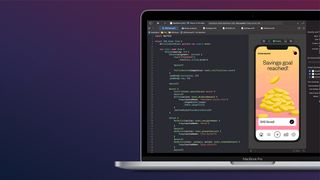Linux Finally Runs on Apple's M1-Based Computer Natively
Native Linux on Apple M1 is getting closer.

Bringing Apple M1 support to Linux has been quite a journey so far as Apple's system-on-chips (SoCs) use loads of proprietary technologies and methods, and Apple has not been exactly cooperative. However, developers have managed to run Linux on an Apple M1-based system and at this point the machine can be used for basic things.
Asahi Linux, a project and community that is working to port Linux to Apple Silicon Macs, is usable as a basic Linux desktop on an Apple M1-powered PC, but without GPU acceleration, according to the progress report.
So far, developers of Asahi Linux have managed to merge various drivers (PCIe, USB-C PD, etc.) and bindings (PCIe) for Linux 5.16. They also managed to make things like pinctrl driver (Apple GPIO pin control), I2C driver, device power management, NVMe + SART driver, and DCP (display control) driver work.
"With these drivers, M1 Macs are actually usable as desktop Linux machines," said Hector Martin, the head of the project. "While there is no GPU acceleration yet, the M1's CPUs are so powerful that a software-rendered desktop is actually faster on them than on e.g., Rockchip ARM64 machines with hardware acceleration."
Since Apple's M1 SoC uses a proprietary (allegedly PowerVR-based) GPU, making acceleration work properly will be hard since it will require independent developers to build a driver akin to that designed by Apple itself. Meanwhile, there are programs that use Apple's proprietary hardware units in the M1 SoC (GPU, video acceleration, etc.) and, without proper drivers, these programs will be unable to get the benefits of Apple's processor under Linux.
Unfortunately, there is still no proper installer for the current Asahi Linux project, so users outside of the community cannot experience native Linux on an Apple Silicon-based system.
"Once we have a stable kernel foundation, we will start publishing an 'official' installer that we expect will see more wide usage among the adventurous," Martin said in a conversation with The Register.
Stay on the Cutting Edge
Join the experts who read Tom's Hardware for the inside track on enthusiast PC tech news — and have for over 25 years. We'll send breaking news and in-depth reviews of CPUs, GPUs, AI, maker hardware and more straight to your inbox.

Anton Shilov is a Freelance News Writer at Tom’s Hardware US. Over the past couple of decades, he has covered everything from CPUs and GPUs to supercomputers and from modern process technologies and latest fab tools to high-tech industry trends.
-
artk2219 Its good to see they've finally got a port running, no thanks to Apple as usual. Eh who knows, maybe one of these days they'll release some official documentation and drivers, since Apple always loves helping out the community and helping others use their devices in new and inventive ways that they themselves didnt think about or authorize, without yelling from the rooftops or swinging a legal hammer, you know, good old Apple.Reply -
King_V Definitely cool . . . and, I am a bit surprised that Apple isn't offering information and encouraging this.Reply
Wouldn't that help them sell more M1-based hardware, after all? -
artk2219 ReplyKing_V said:Definitely cool . . . and, I am a bit surprised that Apple isn't offering information and encouraging this.
Wouldn't that help them sell more M1-based hardware, after all?
Thats unfortunately not the Apple way, they're essentially trying to wall off their garden so that they fully control what everyone is doing with both their hardware and software from start to finish. Also I would be surprised if the amount of general users that want to run Linux on their M1 Macs is anywhere near even the 5 percent mark, and for those that would attempt it id be surprised if its more than 15% that fully need it or couldn't get by with a VM. Small numbers in a small pie basically :-/, they can push those users to more expensive intel based macbooks or mac pros for now so they dont lose out on that sale either really.
Most Popular

